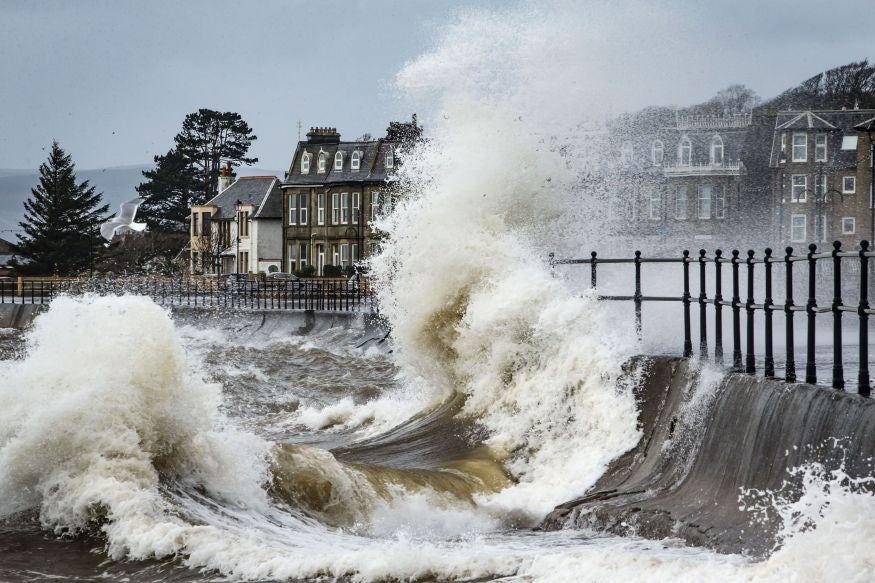Storm Gertrude leaves thousands of homes without power as Met Office warns of 'danger to 'life'
Engineers struggling to reconnect many properties in difficult conditions

Your support helps us to tell the story
From reproductive rights to climate change to Big Tech, The Independent is on the ground when the story is developing. Whether it's investigating the financials of Elon Musk's pro-Trump PAC or producing our latest documentary, 'The A Word', which shines a light on the American women fighting for reproductive rights, we know how important it is to parse out the facts from the messaging.
At such a critical moment in US history, we need reporters on the ground. Your donation allows us to keep sending journalists to speak to both sides of the story.
The Independent is trusted by Americans across the entire political spectrum. And unlike many other quality news outlets, we choose not to lock Americans out of our reporting and analysis with paywalls. We believe quality journalism should be available to everyone, paid for by those who can afford it.
Your support makes all the difference.Winds of more than 100mph were recorded as Storm Gertrude battered large parts of the UK, causing a trail of devastation which left thousands of homes without power, buildings damaged and transport disrupted.
Scotland bore the brunt of the storm, with the Met Office forced to issue a rare red warning for Orkney and Shetland, meaning that winds were so strong as to pose a “danger to life”. In Edinburgh, a man was taken to hospital with head injuries after being struck by flying debris.
Northern Ireland, Wales and northern parts of England also experienced major disruption, as high winds brought down power lines and trees and caused lorries to blow over on motorways. Around 10,000 homes across the country were left without power, with engineers struggling to reconnect many properties in difficult conditions.
In Scotland, winds of 144mph were recorded in the Cairngorm mountain range, while nacreous clouds more often seen in polar regions were also spotted in north eastern areas. Flats had to be evacuated in Clydebank when scaffolding was blown through a roof, while several people were injured on the A96 in Huntly, Aberdeenshire when a lorry was blown onto a car.
Police Scotland responded to reports of storm damage in central Glasgow amid fears that detached masonry may fall on people as they made their way to work. The city’s main thoroughfare The Broomielaw was closed off due to an unsafe building, while in Edinburgh a primary school was closed after a wall collapsed.
Around 40 flood warnings were in place for Ayrshire, Tayside, west central Scotland and the Highlands, while in England the Environment Agency said communities must stay alert to the risk of renewed flooding over the weekend. The River Ouse in North Yorkshire and the Severn at Shrewsbury are expected to be particularly high.
“Strong winds combined with high tides could lead to large waves and spray especially for the Yorkshire coast and parts of southern and western coasts,” said Neil Davies, the agency’s national flood duty manager. “We advise anyone near coastal paths and promenades to take extra care and to avoid the temptation to go ‘wave watching’.”
Trains, flights and ferries were cancelled on 29 January and roads and bridges shut by the high winds, with more disruption expected on 30 January as temperatures plummet. A band of rain moving in from the north west may turn into hail and snow on 30 January.
Join our commenting forum
Join thought-provoking conversations, follow other Independent readers and see their replies
Comments